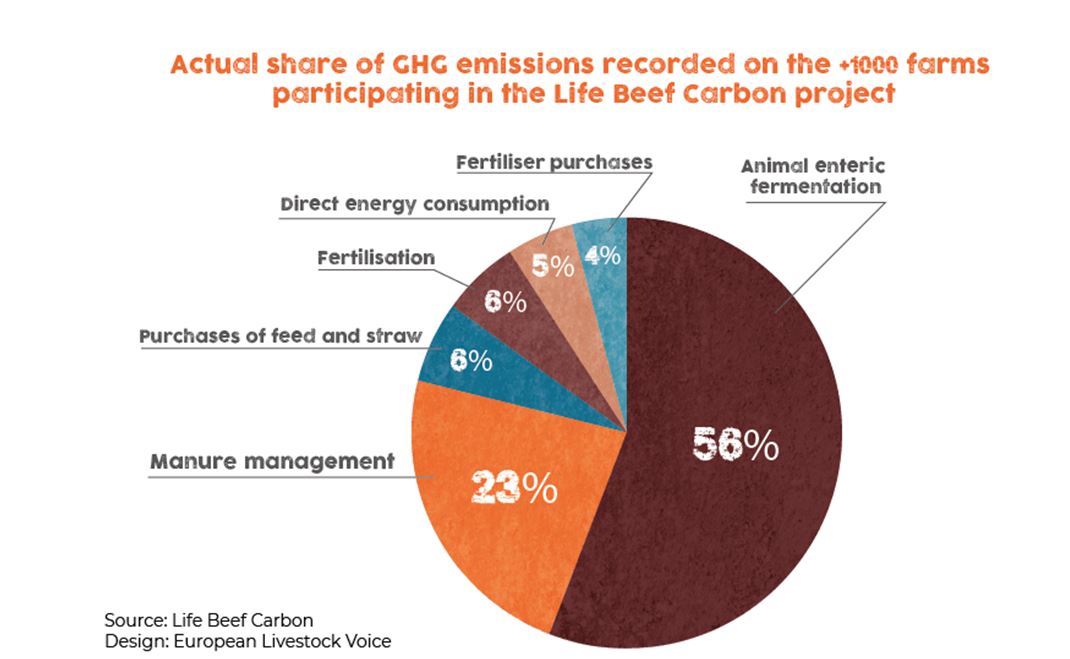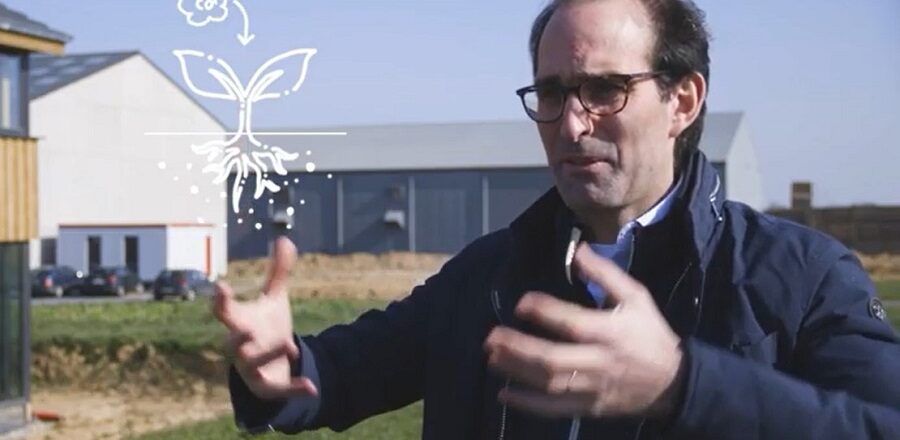
Carbon Farming: behind the concept
Carbon farming is a new buzzword these days in Brussels, but what are we really talking about? In short, most people joining in the buzz around carbon farming are talking about a range of agricultural practices aimed at sequestering atmospheric carbon into the soil and in crop roots, wood and leaves. All plants contribute to carbon sequestration by taking CO2 from the air and growing roots, shoots and leaves.
But carbon farming should not be limited to sequestering carbon only. There are a lot of practices currently taking place on farms that could be considered for their contribution to avoid emissions. For example, preventing the loss of already stored carbon and emissions reduction efforts, which contribute to limiting emissions created by work on farms. For this reason, carbon farming understood in a comprehensive approach could represent an opportunity to mitigate climate change.
According to the latest public study commissioned by the European Parliament in 2021, additional EU carbon farming mitigation potential ranges between 101-444 Mt CO2-e per year, equivalent to approximately 3-12% of the EU’s total annual GHG emissions. It implies that carbon farming could offset 26% of the EU’s agricultural yearly emissions even at the low end of its estimated potential.
These figures remain general estimates only at this stage. They will greatly depend on the type of mechanisms and schemes put in place by public and private operators and the popularity and success of these schemes among the agricultural community. The European Commission expects carbon farming to contribute 42Mt of CO2 storage by 2030, making agriculture a key strategic sector for achieving its “Fit for 55” strategy.
#CarbonFarming understood in a comprehensive approach could represent an #opportunity to mitigate #ClimateChange. Click To TweetPractices can increase the rate of carbon sequestered into soil and plant material to create a net carbon loss from the atmosphere. But, behind the concept, what concrete opportunities and operational mechanisms can there be for livestock farming and its role in tackling climate change?
Agriculture and especially livestock farming can be key contributors to the climate neutrality goal. Livestock can naturally reduce carbon emissions by capturing CO2, where emissions come from the atmosphere as only a few other sectors could. For instance, the graph below shows an evaluation made by the Life Beef Carbon Project of the analysis of thousand EU beef farmers considered in the project.

In particular, grazing livestock can help store increased levels of carbon in the soil in higher quantities than their methane emissions. Indeed, cattle grazing increases the carbon stored in grassland soils by encouraging the plant to produce more roots and absorb more CO2. For this reason, it is a priority to promote the adoption of climate-friendly practices in the agricultural, forestry and livestock sectors to take action on climate and contribute to the European Green Deal.
Effective carbon farming practices include increasing and protecting carbon sinks, like grazing agricultural lands and open grasslands. Maintaining good management practices of grazing lands can improve carbon capture in pasture soil. For example, a leguminous plant is identified in the Life Beef Carbon Project as the most concrete and cost-effective option.

Good management strategies can also increase root systems to make grasslands more efficient at storing carbon. It is also good practice to encourage afforestation and reforestation, respect biodiversity and promote the adaptation of forests to climate change.
Planting hedgerows and trees to help sequester carbon while improving soil and livestock management to increase soil carbon capture can significantly reduce the total carbon footprint. Livestock management offers several opportunities to enhance carbon sequestration. For example, the European livestock sector is improving carbon capture from the methane output of cattle or within the soil of fields for crops or zootechnical use. Crops and grazing rotation where livestock are moved regularly to fresh pastures avoids overgrazing, and grass and crops have the opportunity to restock soil carbon and nutrients. So, the soil can recover its fertility and grass and crops can grow again without additional fertiliser.
As enteric fermentation contributes to emissions, reductions through changes in animal feeding is also possible by improving feed efficiency or adding specific feed ingredients. Methane-reducing feed additives and supplements inhibit the rumen’s methanogens and mitigate enteric methane emissions. They can be natural supplements and compounds, such as tannins and seaweed, or fats and oils. Feeding one type of seaweed as 3% of their diet has resulted in up to 80% reduction in methane emissions from cattle. Fats and oils show the most potential for practical application to farming systems and have shown 15–20% in methane emission reductions.
#Livestock can naturally reduce #CarbonEmissions by capturing #CO2, where #emissions come from the atmosphere as only a few other sectors could. Click To TweetGHGs emissions reduction can also be achieved through animal genetics, too: genetic improvement is a crucial tool for improved efficiency of the animals as well as disease resilience. This leads to a reduction in the total number of animals required to meet a given production level. So, the more productive a herd you have, the less emissions you produce.
Various carbon capture technologies can also help reduce carbon concentrations in the environment. For example, anaerobic digestion recycling is ideal for reducing the carbon footprint of livestock by producing natural fuel and compost. Utilising slurry for anaerobic digestion or manure spreading can reduce the carbon footprint. The biogas produced from slurry can be used as biofuel for heating and energy production systems, replacing polluting fossil fuels. In this way, it is possible to simultaneously reduce the carbon emitted for transport. Similarly, the solid digestate can be used as a natural fertiliser, which is beneficial for soils and valuable for organic farming.
These innovative practices show that livestock farming can create many opportunities and concrete operational mechanisms to reduce greenhouse gas emissions significantly.
Farmers are investing currently, but costs are not always covered or rewarded by the market. More coherence is needed and policy support to encourage and help farmers implement all these practices to fight climate change together.
Source: European Livestock Voice





